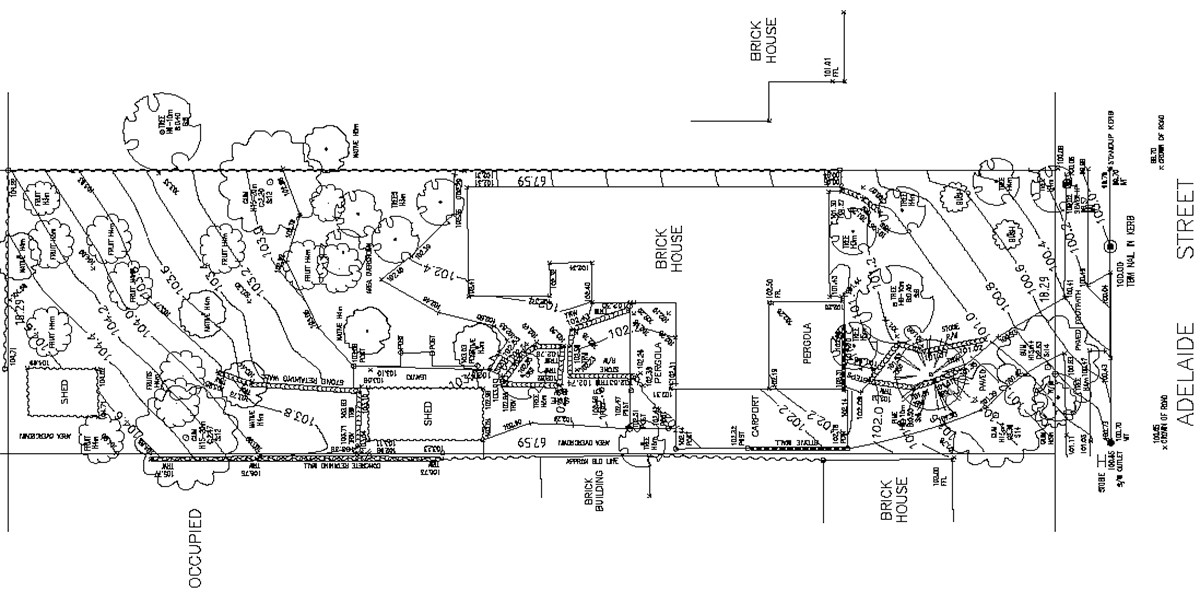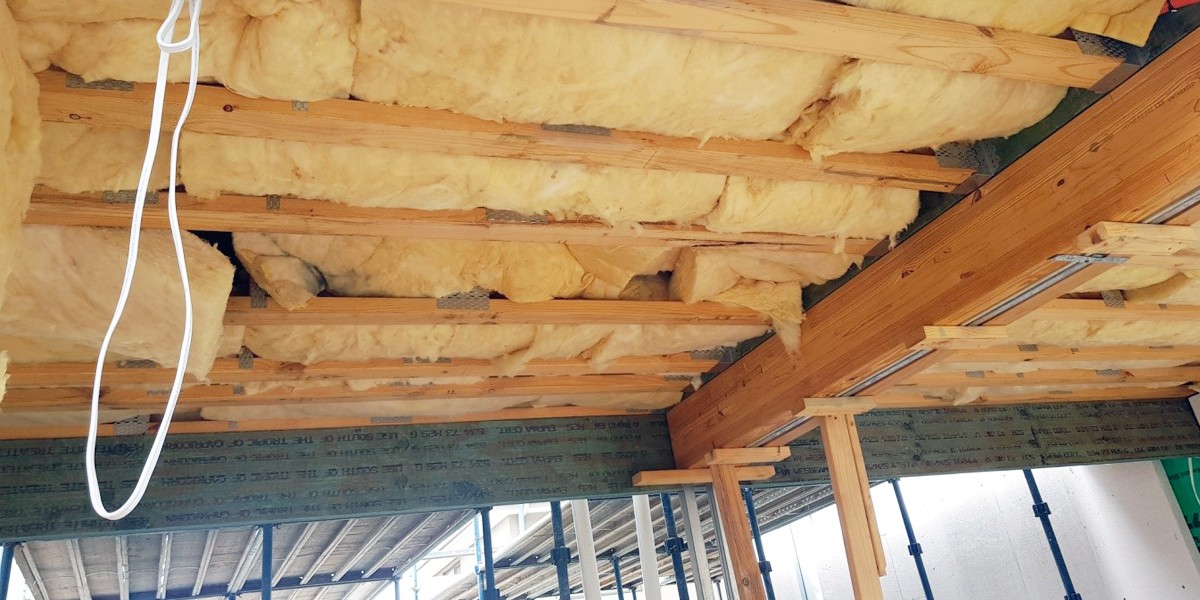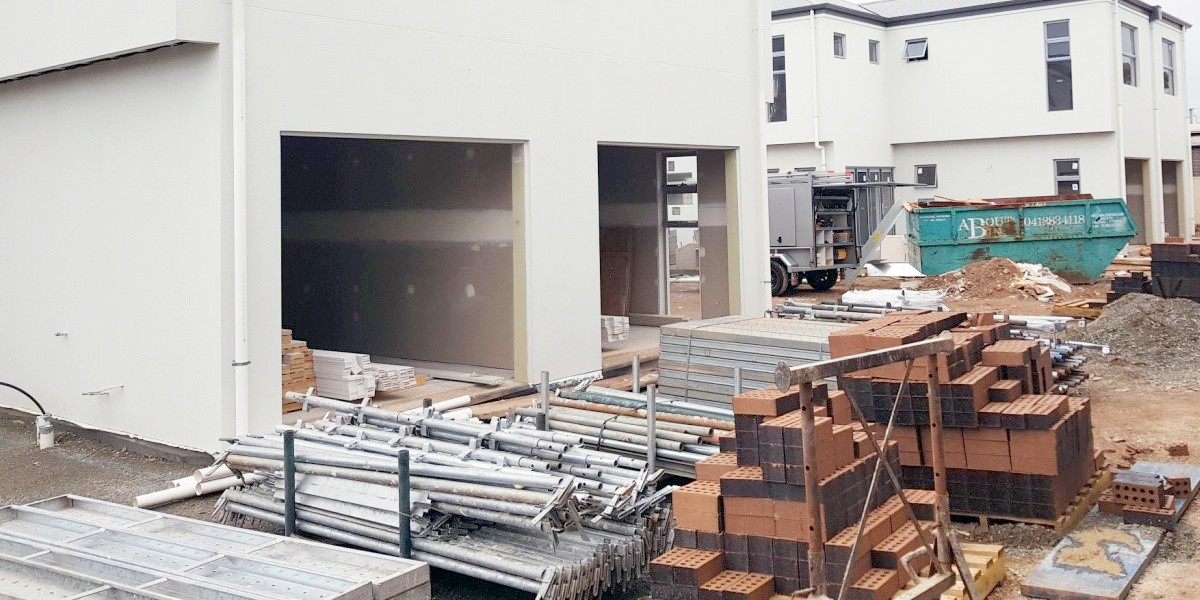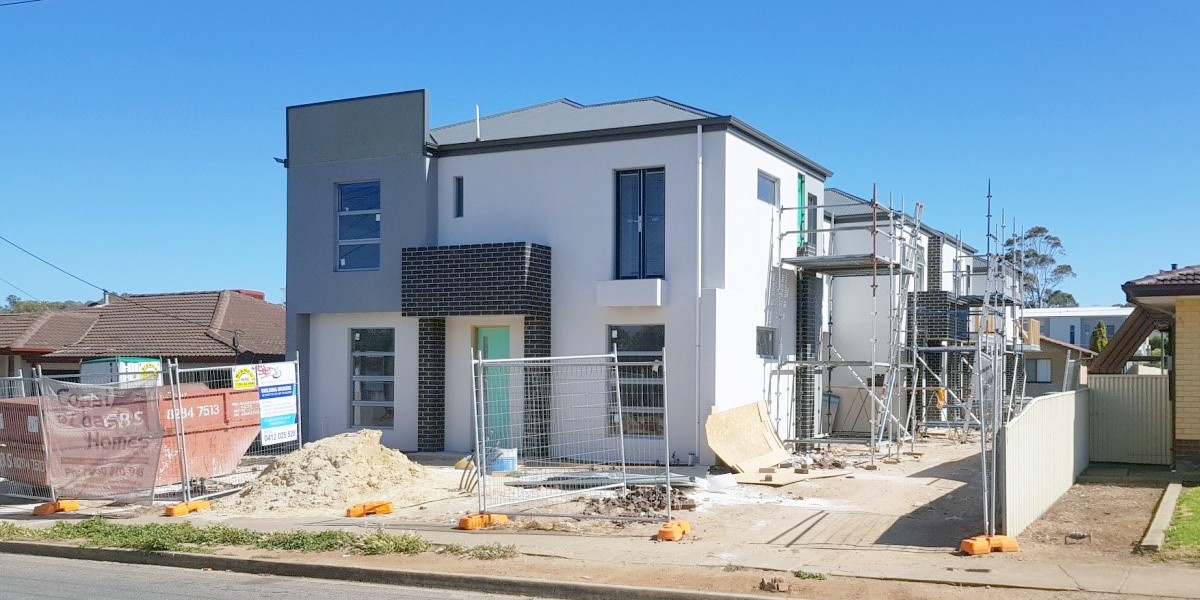Welcome to the building guidebook! “I hope you find it as interesting to read as I found it to write.” Jon Carey Director
I’ve been in the Adelaide building scene for over 20 years, having worked as a Sales & Design Consultant, gaining a wealth of experience while working with various builders across the state. Four years ago, I decided to “cross over to the other side”, working not for builders, but representing the interests of my clients in dealing with builders as a Builder Broker.
This building guidebook is designed to demystify the process of building, by answering all of your burning questions, no matter how big or small, regarding building your home. I trust it will provide you with a wealth of information and will highlight where you can turn to for additional support.
The guidebook is populated with questions that I often get asked, and my answers to them. It has been designed not only to be interesting, but to allow readers the opportunity to ask “live” questions using the form at the bottom of the page.
Disclaimer: The information provided is of a general nature, and you are advised to seek expert advice rather than relying on it when making a decision. My answers are based on my experiences in the Adelaide market and some of the information may not be correct in other states.

Using a Building Broker and Dealing with Builders
Just like a finance or insurance broker, a building broker has access to a range of suppliers, and knows how to compare them to get you the best deal.
Anyone working for a builder is paid to put the builder’s interests before yours. A broker works for you, not the builder, and puts your interests first.
The most common way that a builder broker is paid is via a commission, or fee, paid by the builder with whom the job is placed. Alternatively, you could look to negotiate with the broker to pay them an hourly rate or a fixed fee.
A skilled broker bypasses the builders sales consultant and deals directly with the builder or management, thus saving the expense of the sales consultant’s remuneration. They also save the builder administration costs by doing a lot of the pre -construction work for them.
An experienced broker has contacts within the industry, and by dealing with a number of builders, can quickly identify the value of a particular deal. Builders recognize the value of the broker’s portfolio and will offer them better prices than they would to an individual client.
Normally a broker works with a group of builders with whom they have a relationship. Builders have often developed their own comfort zones. Some offer better deals on smaller projects, some on larger projects, some on custom homes etc. An experienced broker knows which group of builders to approach for different projects and through experience has identified builders who will provide good results.
Yes. Some builders have business models that are not compatible with using an intermediary like a broker. To advance their own interest, these builders need to control the process themselves, rather than allowing a broker or client to have negotiating power.
We work for you, not the builder! We develop the plan and accumulate the information. You retain the rights to the plan, and control the information. We require builders to provide quotes based on the same criteria. This makes your value comparisons easier and more accurate.
The broker will normally have a standardized procedure, and set of tender documents, that look after your interests by including them in the contract. A reputable broker will remain involved with your project until it is finished. This allows you to call on them if you have queries during the construction phase. It means that although the contract is signed, they can sometimes have upgrades included on your job at no extra cost.
A building contract is a legal document. If there are queries or disputes over what is or isn’t included on a job, the details in the contract become critical. A good broker will ensure that your needs and interests are protected by having detailed specifications included in the contract, which spell out exactly what you have paid for and are entitled to.
The theory of the offer is good, but the reality is that the builder has more to gain than you. Providing this information gives them ownership of it and at your expense. Often the builder will claim copyright of the plan, and as they engaged the engineer, they have exclusive access to that documentation. This puts you at a disadvantage if you want to get alternative quotes on your job, or decide not to proceed with the builder. Obtaining the plans and information through an independent broker, rather than the builder, allows you to control the information and obtain alternative quotes.
An allowance is not a fixed amount and can change. It can be used where the builder does not have enough information to provide a fixed price, or it can be a marketing technique designed to entice you to sign a contract with that builder. Information, in the form of an engineer’s report, is necessary for any builder to be able to provide a fixed price for the footings and site costs on a job. Obtaining plans and engineering of your own through a broker, before approaching builders, enables you to acquire several fixed price quotations and compare them.
Quotes from different builders for a recent project varied from $590,000 to $648,000 based on the same information, and with the same inclusions
I have a number of builders who I can call on. The requirements of a particular job usually dictates which builders I would ask to quote. As a starting point I would normally ask for three quotes on each job.
We often work with plans brought to us by clients.
Certainly. You are under no obligation to proceed further.

Engineers Reports and Other Valuable Information
Before commencing building you will need:
- A set of drawings to take to council for planning approval.
- A site and drainage plan.
- Possibly a subdivision application.
After you receive planning approval and before building is started you will need:
- Working drawings
- Footing design and site engineer’s report
- 6 Star energy assessment
- Framing design
- Structural engineering report
- Insurance certificate
- Building approval
An engineer’s report has several components. It details the site conditions and how they should be addressed. Firstly, the engineer arranges for a site survey, detailing the ground contours of the site, and for core samples of the soil to be taken.
Using the contour plan, the engineer can determine the level that the floor of the house should be set at, taking into account the driveway slope and how sewer and stormwater flows will be affected. The level set may require some, or all of the site to be cut or filled, or a combination of both. The level is noted on the plan as the FFL (finished floor level) which is 200mm above the BL (bench or soil level) as 100mm of rubble is put down with the 100mm thick concrete slab laid on top. The foundation is the ground that the house is sitting on. The footing is the concrete and steel slab / beams which support the rest of the house. By examining the soil core samples, the engineers can determine the reactivity of the soil under the house and design the footing to withstand the pressures from soil movement as well as the weight of the building. Generally, the higher the clay content of the soil, the greater the chance of movement as the clay swells when wet and shrinks when dry. The concrete slab generally has a series of concrete beams under it, of a width and depth to withstand soil movement without the slab cracking (most slabs develop fine cracks as the concrete dries but these are not structural issues).
The engineers also take note of wind speeds in the locality and note requirements for the building if necessary.
On some sites, especially where an existing building has been demolished, the engineers will note that there is loose fill on the site and require the slab to be thicker, and with additional steel mesh. Engineers will take into account tree effects as well. This is where a tree either because of its size, or the size it may become, will affect the moisture content of the soil under the house by soaking it up disproportionally, on one side or corner. The footing will in that case be engineered to deal with the extra stress.
Using the contour plan again, the engineers will determine a site and drainage plan showing how water from the roof of the house and surface water in the yard are collected and dealt with. They will also note where retaining is required. The engineering plan will also show where expansion joints are needed to articulate the walls, and the number and location of downpipes to take rainwater from the roof and gutters.
Working drawings are like a workshop manual for the dwelling. While the planning drawings show how the dwelling will meet the planning provisions in terms of siting, setbacks, and appearance, the working drawings have detailed measurements and are the basis for how the dwelling will actually be built.
The 6-star energy assessment is produced by an independent assessor, and rates how energy efficient your house will be based on the materials included, the orientation and other factors. A dwelling must meet the 6- star energy rating to be approved for construction, and the assessment may nominate additional insulation and other items that need to be included, or upgraded, for the rating to be met.
Documents showing the wall frame layout, roof truss calculations, structural steel requirements (if necessary) etc, all need to be created before building approval as opposed to planning approval can be granted. An insurance certificate is also needed.
Often the building approval assessment is done by a private certifier and then sent to council to be stamped and issued to the applicant.

Building Materials and General Questions
There is no right or wrong answer to this question. Some builders use one and some the other. Provided the house is constructed properly, both framing methods should last for many years. The parents of many of today’s new home builders, built homes with timber frame / brick veneer construction and those homes are still structurally sound.
Several building companies promote their steel frame homes as an answer to that issue. In reality, a well constructed home built with either timber or steel frames will be resistant to white ants if the owner follows a few simple guidelines. To my knowledge, none of the hundreds of timber frame homes that I have been involved with over the years have suffered white ant damage, but one steel framed house did. If white ants do enter a structure, there are many materials other than structural timber that they will eat.
Not really. Timber framing can be cut and altered on site if needed, whereas steel frames come partially assembled from the factory, which makes them difficult to change. However, because they come partially assembled, the steel frames can save time on site.
These days the choices appear almost endless. Brick veneer attached to a timber or steel frame is the traditional choice. It is relatively maintenance free and durable. Aerated concrete materials such as Hebel sheeting or blocks are popular but do require a render or texture coating to finish them off. While the Hebel is usually less expensive to buy and fix, the render adds an extra process which means the overall cost can be higher than brick.
There are many alternative materials, often with improved thermal capacities, from which to choose and there are also economically priced sheet materials.
The answer as to which is best comes down to personal choice and the performance required.
The stone or tiles that you see on the front of modern homes is a veneer, laid over another material such as brick or Hebel. They are a cosmetic addition to the house to replicate an era or style of dwelling. Some contemporary designs incorporate metallic finishes. These are likely to be an alternative material fixed directly to the frame.
This is another personal choice. Some people like a tiled roof as it is quieter when it rains, some people like to hear the rain. Technically both materials will provide a relatively maintenance free roof over your head. The tiles are nailed down and the capping cemented in place with flexible cement. The Colorbond sheeting is usually full length from ridge to gutter and unlikely to rust. Beware though, that some colours in both materials will fade faster than others, with the colour change more noticeable on the metal roofs.
With the advent of finishes such as Colourbond, and the improvement in exterior paints, metal has replaced timber for many external trim materials, as it is more economical and weather resistant. Unless it is well maintained, timber exposed directly to weather will often crack or rot.
There is a wide choice of styles and materials when it comes to windows. Firstly, styles: Sliding, as the name suggests, has one fixed and one horizontal sliding panel. Awning windows are hinged at the top and swing out from the bottom. They can comprise the whole window or be one section with fixed panels above or below. Hopper windows work the same as awnings, but hinge from the bottom with the top opening out. Casement windows hinge at the side and swing outwards like a door. They can be single or double.
Most can be fitted with flyscreens (externally on sliding windows and internally on the others).
Materials : Aluminium is the cheapest and also requires the least maintenance. The aluminium section of the sliding windows make them particularly economical. The other styles of windows are manufactured from a larger aluminium section, perhaps making them more attractive to look at but also slightly more expensive. Timber windows are often chosen for their appearance. They are more expensive and require more maintenance. Sometimes the timber is combined with aluminium, one material on the inside and one on the outside. PVC is also used for window frames but is not common.
The most common windows are sliding aluminium ones because of cost. Sometimes people use a combination of awning windows to the front, for appearance, and sliding windows to the sides and rear to keep the price down. Awning windows are ideal on the upper level of two storey homes too, as the fly screen can be removed and cleaned from inside the house. The screens on sliding windows need to be accessed from outside the building.
Standard glass is just that. Hit it hard and it will break into pieces, which can prove dangerous. For that reason, glass fitted below a certain level (for example, in the bottom of a large picture window or in a sliding door) is safety glass, that when broken, crumbles into beads so that it is less likely to cause injury. To maintain strength, thicker glass is used in larger windows.
The glass in windows can have different thermal and acoustic properties. Other than standard glass, specialty glass uses silicone sandwiched between two sheets of glass to reduce heat transference. Double glazing is even more effective in stopping heat and cold transmission.
Most houses are built with standard glass to keep the construction cost down, but the alternative options are there.
Insulation is used to control the temperature, and heat transference in a house. In most cases, insulation batts are placed in the external walls and above the ceiling. It is often placed inside internal walls and between floors in two storey homes as well. This type of insulation works by trapping air within a rock wool or fibre material.
In addition, reflective foil sheeting known as sarking, is sometimes used in the external walls, or in the roof under the roof sheeting, or tiles.
Insulation’s effectiveness is measured by its R rating. with the higher rating being the most effective.
Yes, besides the standard plaster board sheet there are specialty sheets specifically designed to provide sound proofing, fire resistance, and to resist sagging when used on ceilings.
Wet areas, i.e. bathroom and laundry floors, shower alcoves etc, should be waterproofed with a flexible membrane applied before tiles are laid. This prevents moisture damaging floors, frames and other areas of the house, and is especially important for the membrane to be used on the wet area floors on the upper level of two storey houses.
By law, the builder provides a three- month structural warranty period in which minor faults and issues can be attended to. They are also obliged to provide a ten-year structural warranty. Some builders offer a longer warranty, but generally a warranty item would show up sooner rather than later. The home owner needs to be aware that they have obligations under the warranty too, and that it doesn’t cover wear and tear. Some products including appliances and air conditioners have manufacturer’s warranties as well.
Turnkey is used to describe a new home where everything has been provided, so that the owner or a tenant can move straight in without having to complete anything further. Starting at the front it would include the letterbox, landscaping, driveway, rainwater tank, stormwater disposal, retaining walls, fences, clothes line and TV antenna. Inside, it includes floor coverings, window treatments, lighting, dishwasher and air conditioning.
A house and land package is the term used to describe entering into contracts to buy a house yet to be built, and a plot of land on which to build it. The contracts are not necessarily with the same parties, as in many cases, the builder does not own the land. Hence, as a purchaser, you will enter into a contract with a builder to build a house, and a separate contract with a land developer or vendor, to purchase the land.
Whilst this is a relatively common practice, there can be some pitfalls for you as the purchaser. The contracts may be linked,. i.e. if you buy the land, you must build with the builder. The cost of building may not be fixed, the price may include allowances, and if the prices go up you may not be able to go ahead with the building but are already contracted to purchase the land.
Like all significant purchases, it is important for you to receive expert, independent advice, and not just rely on the sales people involved.

Acquiring Building or Development Sites and Subdivisions
As somebody wise once said, start at the beginning.
- Determine the outcome you wish to achieve.
- Treat property development like a business not a hobby.
- Surround yourself with people who know more than you do.
- Consult with an accountant familiar with property.
- Decide on the size and location of your development.
- Become familiar with the local council’s planning guidelines that will apply to your development.
- Determine a feasibility strategy. Set your risk and profit parameters.
- Know what costs are involved, for example, stamp duty, subdivision, plans, reports, approvals, capital gains, GST, construction costs, civil works, selling costs and financial costs.
- Talk to your bank or finance broker to see if they are able to finance your project.
- If you already have a property, determine what is its best use . Rather than developing this site, it may be better to use it as security to purchase a site with more development potential.
- Consider using a buyer’s agent to find you a suitable property. With their contacts and experience they can often find a development site off market, meaning that you have time to do your feasibility, and don’t have to compete with other buyers.
- Be prepared for the unexpected.
This refers to buying property either before it goes to market, or which hasn’t been offered for sale. This can be done in several ways. Engage a buyer’s agent to source property or negotiate on your behalf.
- Choose a geographic area and door knock or letter box properties, yourself, that meet your criteria.
- Through research you can find people in financial distress who need to sell. (I do not advocate taking advantage of people in distress, but sometimes a quick private sale can be beneficial to both buyer and seller).
- Become friends with real estate agents active in your chosen area. If you are respectful and sincere and let them know what you are interested in, they may be able to offer you properties before they go to market.
To successfully buy using these methods, you need to be able to offer an unconditional contract to the vendor.
You can go it alone, but I suggest appointing someone to oversee the process for you.
The steps are:
- Check the council development plan. This will tell you what you are likely to be permitted to do with the property, and what the limitations are. The development plan will have information such as zoning, minimum block size and frontage, front, side and rear setbacks, open space requirements and many other things that you need to know before starting a subdivision.
- The next step is to check your understanding of the development provisions with a council planning officer, either over the phone, over the counter or preferably both.
- Determine if what you can do with the property meets your requirements.
- Engage a surveyor to manage the subdivision process and submit the application.
Yes. By gaining the approval to subdivide without going through the complete process, you can save a potential purchaser time, whilst taking away the uncertainty that subdivision may not be allowed. For a one into two subdivision, the initial application will cost approximately $2,500 and does not require removal of the existing dwelling. The complete subdivision process will cost a further $21,000 and requires the existing dwelling to be demolished..
For a straight forward subdivision, you would need to allow up to three months for the initial approval, and a further six months before the new titles are issued. This is a guide only and your job might take more, or less, time.

Recent Questions
Sketching a plan gets you started. After that you need:
- A properly drafted plan, including the floor plan, elevations and site plan.
- A site engineers report including footing design & site and drainage plan.
- Planning approval.
- 6-star energy assessment.
- Timber take off and roof truss design.
- Structural engineering.
- Building indemnity insurance certificate.
- Working drawings.
- Building approval.
- Finance approval.
The money paid as a deposit, or down payment, is used to pay for the preconstruction plans, reports and approvals. This money is spent getting the job to the point of construction. If for some reason construction does not go ahead, this money is not normally refunded, as it has been spent.
Progress claims refer to the invoices the builder issues to the client, at the end of each construction phase, I.e. after the slab has been laid, after the frame is up and after the brickwork or cladding is in place. It is important that these invoices are paid in a timely manner so that the builder can pay for materials and tradespeople. Note: It is also very important for your financial wellbeing that you check that the work has been completed before payment is made.
Concrete is a porous material, and without a moisture proof barrier between the edge of the path and the slab, moisture can travel from the path into the slab which can cause problems and can damage flooring materials.
The soil under the footing, or slab, of the house, should be kept at a constant moisture level. With soils drying out and shrinking in dry weather, and swelling up in wet weather, it is prudent to have a path around the dwelling, to help maintain the moisture level underneath.
The path around the house is normally set 100mm lower than the floor level to minimize moisture transference, and to allow for the home owner to do a visual inspection for white ants. White ants cannot survive in sunlight and are forced to build mud tunnels up and over the edge of the slab to enter the house. A visual inspection is therefore an excellent preventative measure.
Treated timber can be used in the frame. Physical barriers such as Termimesh are used to prevent white ants from penetrating through the slab and can also be used under external walls such as on boundaries, where inspections are difficult. In reality, most modern homes, if constructed correctly, are unlikely to be attacked by termites.
Encumbrances are building rules imposed on all dwellings in an estate, by the estate developers. They are in addition to council requirements and can include:
- Style of building.
- Choice, or mix, of materials.
- Ceiling heights
- Whether a single or two storey house can be built on a block.
It is important to understand the implications of the encumbrances in an estate that you are considering buying in, as they may limit your personal choices, and add to the construction cost.
.
Reader's Questions
I can only answer this based on my experience as a home owner and from being in the building industry. I have no financial qualifications on which to base an answer. When my wife and I purchased our first house in the 70s you could buy a reasonable 3 bedroom home for around $15,000. Over the years prices have gone through phases where they have risen, faltered and stagnated. Now the average price in Adelaide is $450,000 plus. Today’s price was inconceivable back then. If fact I remember hearing of someone buying a Sydney house with harbor views for $100,000. We all thought that sounded crazy.
Property prices in in-demand areas always seem to rise over time. When you buy, you lock in a price in today’s dollars and that price may drop or stagnate but eventually seems to rise. If you choose to rent then you will always be paying the ‘current price’ so it would seem to me that as inflation gradually wears down the value of a dollar, over time you benefit by picking a time and purchasing a property and paying it off with future discounted dollars rather than always paying the ‘current price’.
Rentvesting is the term describing the practice of purchasing a rental property and renting it out while renting a property in the city or perhaps at the beach to live in yourself. These city or beach properties might have a substantial purchase cost preventing you from buying, but the rental cost is affordable. Renting doesn’t provide capital growth though and your rent is paying down the landlords debt not yours. The next step is to purchase a property elsewhere at a price which you can afford and the rent and capital growth might improve your financial position to the point that you can buy a property where you would really like to live.
Do you have a question that hasn’t been answered by this guidebook? Submit it below and I may add it!

